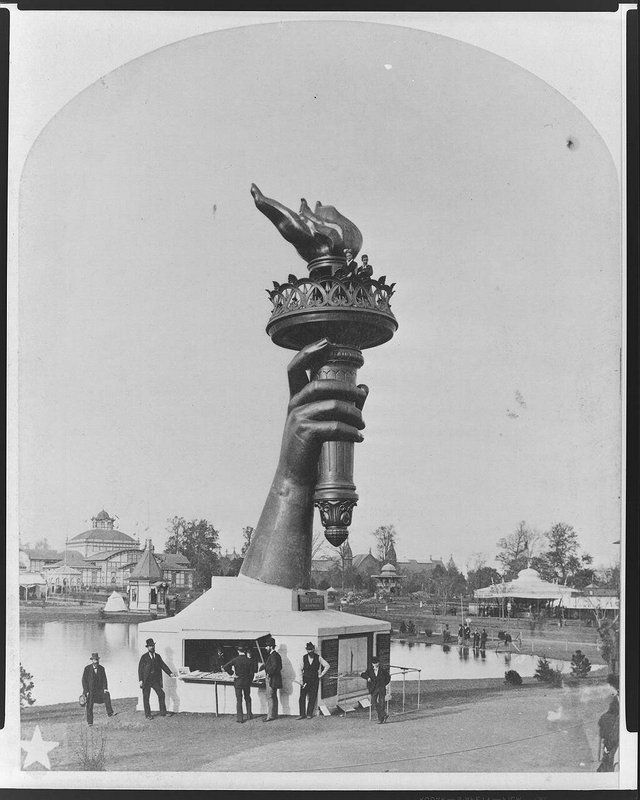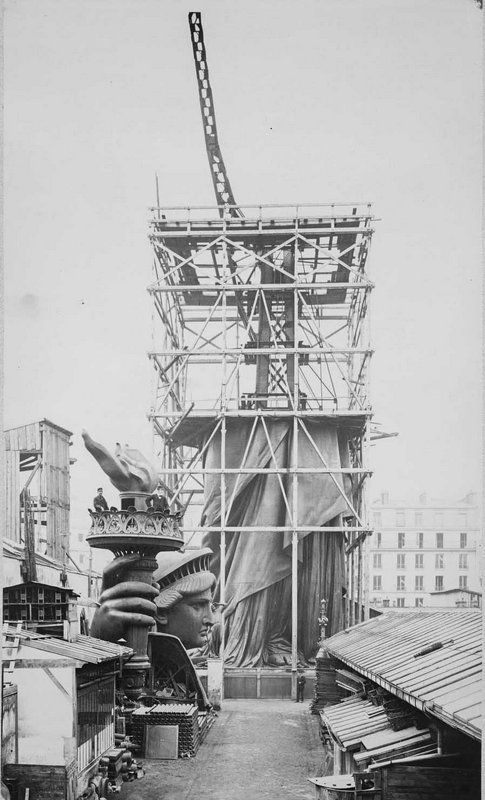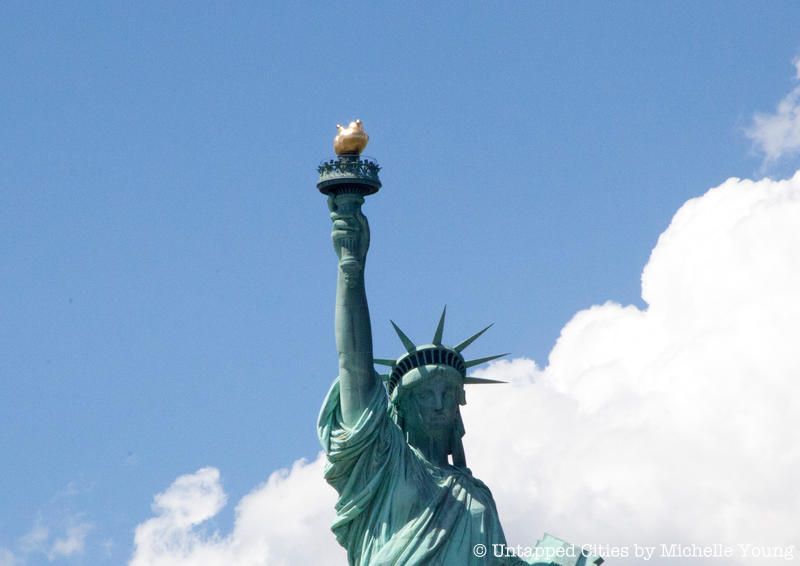Koryo Books: Where K-Pop Fans and Book Lovers Converge in NYC
Established over 40 years ago, this Koreatown store has evolved from a community bookshop into a global cultural destination!


For July 4th, we shared out Top 10 Secrets of the Statue of Liberty but there are so many fun facts and photographs about Lady Liberty’s torch alone we’ve decided to share them here.

Photo Courtesy of EarthCam
Although the torch has been closed since 1916 (more on that later in this piece), the Statue of Liberty-Ellis Island Foundation, in partnership with Earth Cam, provides live views of the torch and down onto the harbor. The website offers a “hall of fame: so you can check out snapshots going back in time. You can see the torch in all weather – clear skies (like above), rain, daytime, evening.

The hand and torch of the Statue of Liberty on display in Madison Square Park. Photo via New York Public Library.
As you may remember, the Statue of Liberty was split into pieces and packed into crates from Paris, where it was made by sculptor Frédéric Auguste Bartholdi and Gustav Eiffel. Even before the rest of the statue arrived, the arm and torch were shipped by boat from Paris to New York City where it was displayed in Madison Square Park from 1876 to 1882 as a fundraising effort for the pedestal of the statue.
[post_featured_tour]

Statue of Liberty torch at the 1876 Centennial Exhibition in Philadelphia. Photo via Library of Congress
But before Madison Square Park, the torch was actually in Philadelphia for the World’s Fair (also known as the Centennial Exposition) in Fairmount Park from May 10 to November 10, 1876. For a $0.50 entry fee, fair-goers could climb to the balcony and the proceeds went to the funding of the statue. Bartholdi himself also came for the event.

 Aftermath of Black Tom Explosion on a Jersey City Pier. Photo via Library of Congress.
Aftermath of Black Tom Explosion on a Jersey City Pier. Photo via Library of Congress.
During World War I, German spies launched an attack on a munitions facility on Black Tom Island, a mile-long pier on landfill off the New Jersey shore across from the Statue of Liberty. Black Tom “Island” was owned by the Lehigh Valley Railroad and served as a transport site for war supplies going to the Allied forces in Europe. On July 30, 1916, fire was set to the cargo, which reportedly contained 2 million pounds of ammunition, including shrapnel, TNT and dynamite. $100,000 worth of damage was done to the Statue of Liberty and the torch has been closed since.
It took 17 years to settle the claims against Germany, ordered to pay $50 million in reparations in 1939, but the payment was not made until 1979. The National Parks Service contends that the Black Tom explosion “was one of the largest acts of sabotage to our nation prior to the event of Pearl Harbor on December 7, 1941.” Today, a monument on Liberty Island marks the location of the attack.

Photo from New York Public Library.The completed torch in a Paris studio
As you can see in the original photographs of the torch, it was originally of solid copper as Bartholdi designed. The quest to light the torch has been a constant question nearly the length of its existence. Bartholdi originally wanted torchlights in the balcony, a move vetoed by the Army Corps of Engineers fearing interference with navigation. Bartholdi then cut portholes in the torch, but on opening day, The New York World described it it as “more like a glowworm than a beacon.” Bartholdi then wanted to gild the torch in gold but it was too expensive.

The original torch of the Statue of Liberty
In 1916, architect Gutzon Borglum cut out large windows and used copper bands to support the glass. Lamps were placed in the windows at night to light the torch. Unfortunately, the design leaked and caused substantial degradation to the entire structure from arm to torch.

To marking its centennial in 1986, the Statue of Liberty underwent some major upgrades. The torch was reconstructed to reflect Bartholdi’s original design, and even includes the gold leaf he so desired, in 24 karats.
InIn 1986, the original Borghum torch was restored and installed in the museum inside the pedestal of the Statue of Liberty and was accessible to those with tickets to the pedestal or the crown. The torch was recently moved from that spot to its new home inside the new Statue of Liberty Museum, which is under construction and will open in May 2019. A special hydraulically stabilized vehicle was used to carry the torch the 470 feet between the museums, while a sizable SWAT team kept watch over the procession.

Charlie Deleo, the Keeper of the Flame. Photograph by Stephanie de Rouge.
Charlie Deleo, also known as the “Keeper of the Flame,” spent 33 years taking care of the Statue of Liberty. He was one of the only one people access and had a deep personal connection to the statue as a whole. Inside, the stastue there is the narrow, ladder that leads up to the torch and is the only access route. Can you imagine tourists climbing this back in the day?

In the Alfred Hitchcock movie The Saboteur, full of New York City film locations, the final scene takes place atop the torch of the Statue of Liberty. In the final moment, the character and saboteur Frank Fry has fallen over the balcony of the torch after a pursuit. Obviously filmed on a set, you can see how the proportions of the flame are a bit off.
Next, check out the Top 10 Secrets of the Statue of Liberty. Get in touch with the author @untappedmich.
Subscribe to our newsletter